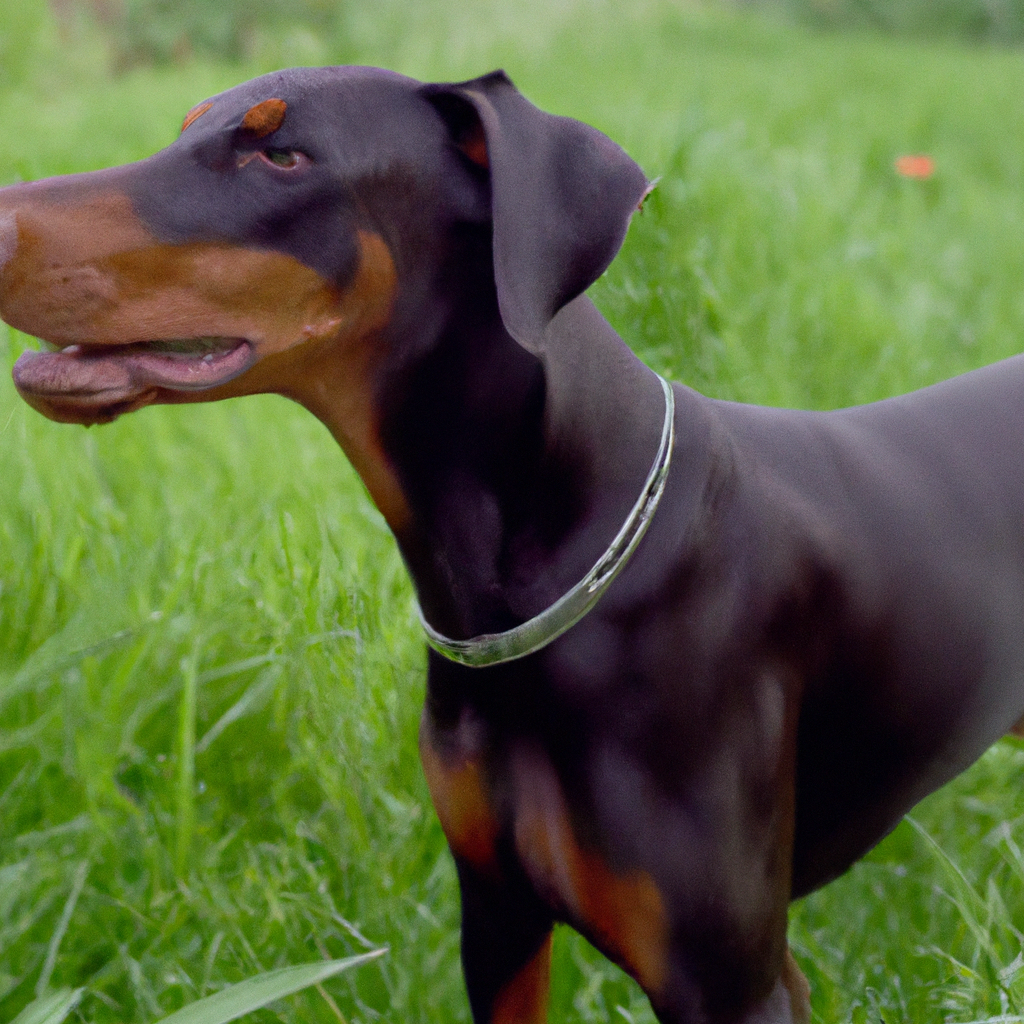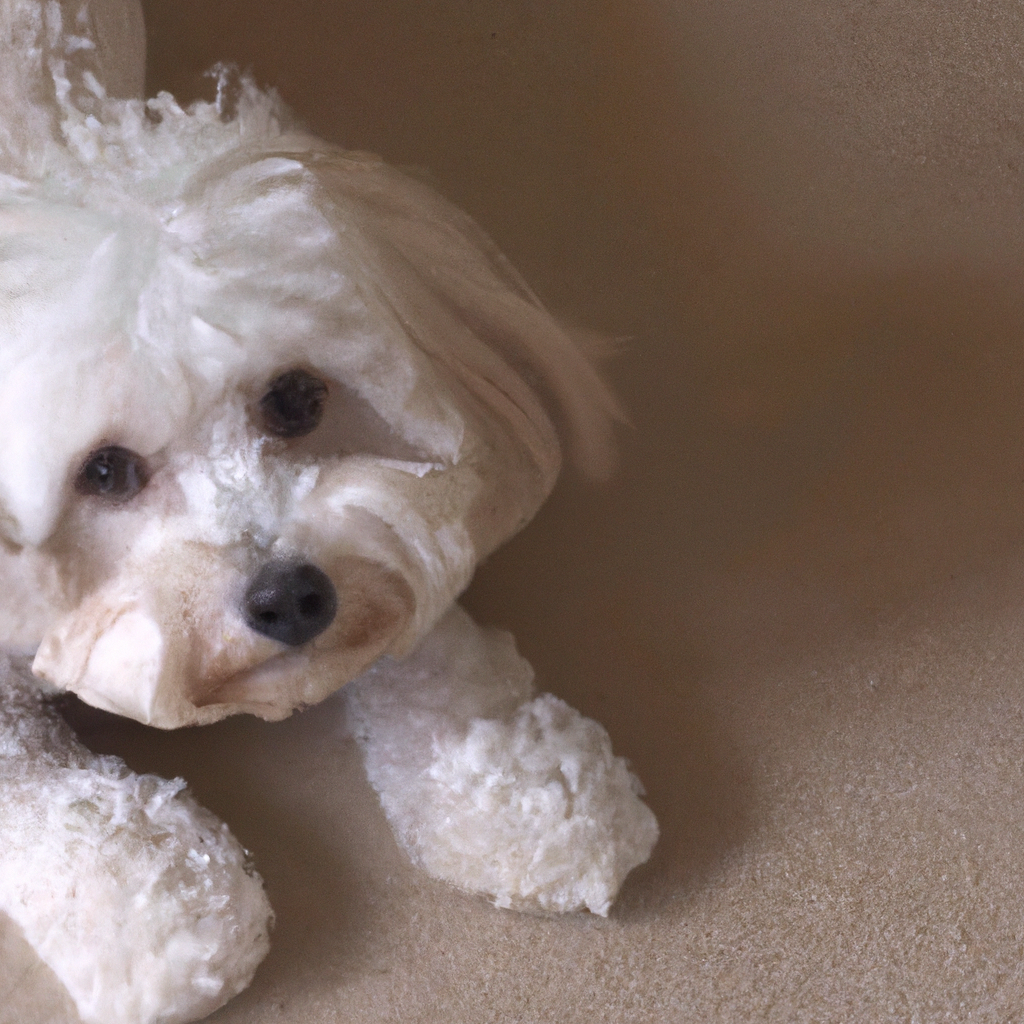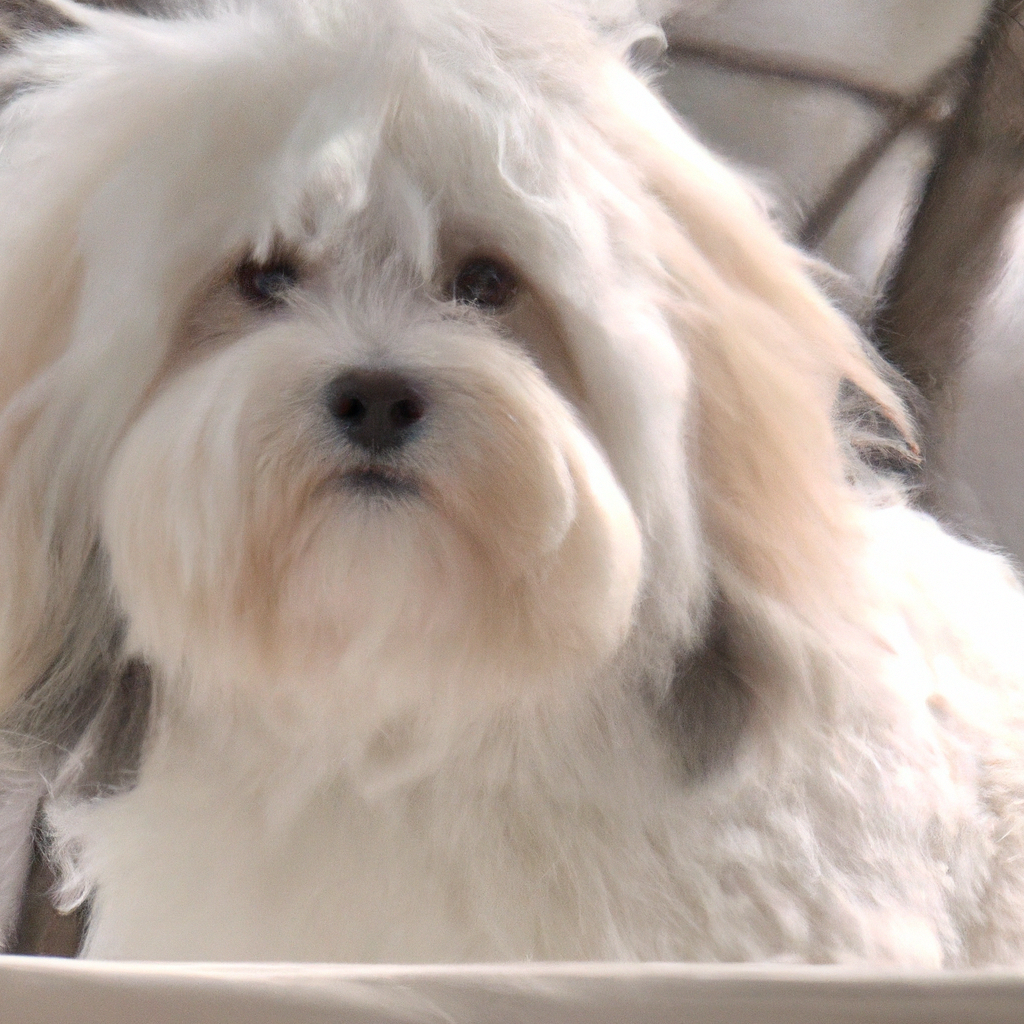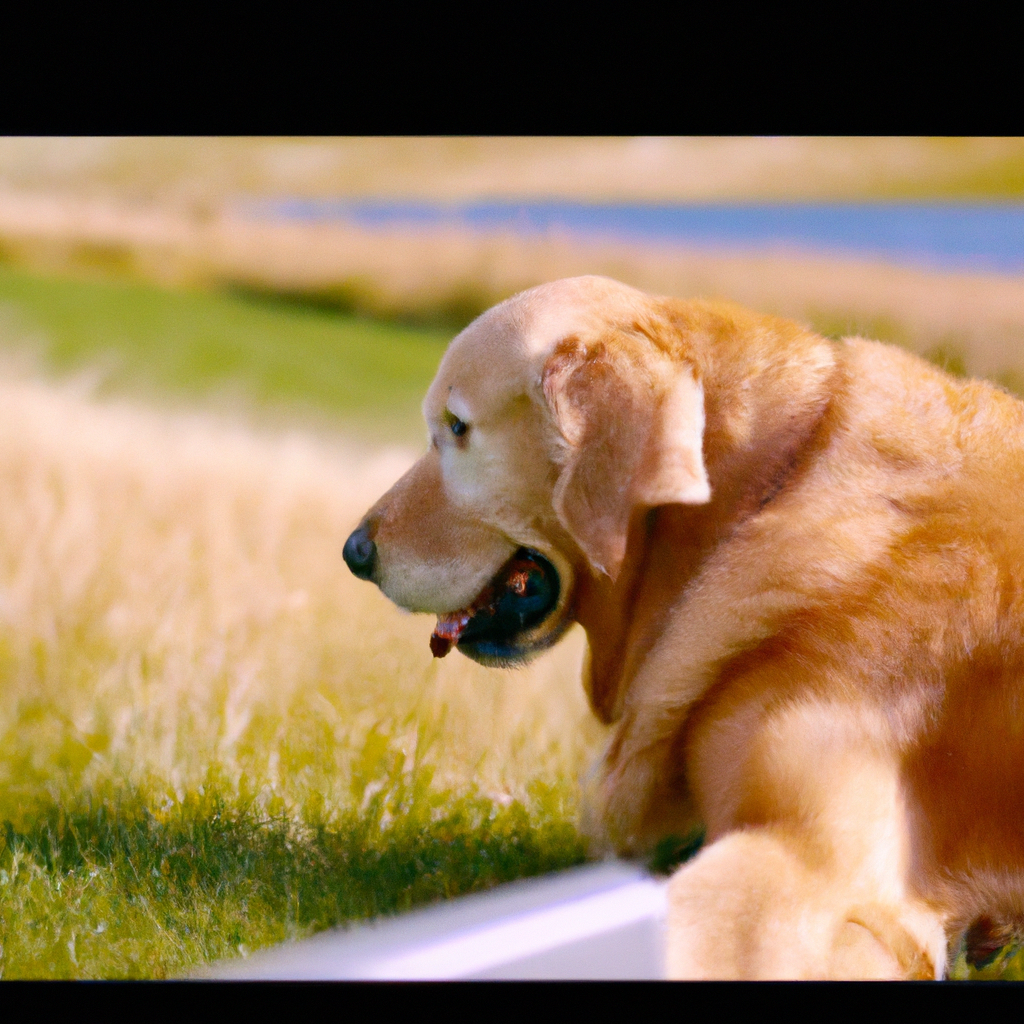“Discover the beauty and diversity of Doberman colors and breed standards.”
Doberman Pinschers are a popular breed of dog known for their loyalty, intelligence, and protective nature. One of the unique features of this breed is their coat color, which can vary from black, blue, red, fawn, and white. In this article, we will explore the different Doberman colors and the breed standards for each color.
Understanding the Different Doberman Colors and Their Characteristics
Doberman Pinschers are a popular breed of dog known for their loyalty, intelligence, and protective nature. They are also known for their distinctive coat colors, which can vary from black to red, blue, and fawn. In this article, we will explore the different Doberman colors and their characteristics, as well as the breed standards that govern their appearance.
Black Dobermans are perhaps the most well-known and recognizable of all the Doberman colors. They have a solid black coat with no markings, and their eyes are usually dark brown or black. Black Dobermans are highly sought after for their striking appearance and their reputation as excellent guard dogs. They are also known for their intelligence and trainability, making them a popular choice for police and military work.
Red Dobermans are another popular color variation. They have a rich, deep red coat with no markings, and their eyes are usually brown or amber. Red Dobermans are known for their affectionate and loyal nature, and they make excellent family pets. They are also highly intelligent and trainable, making them a popular choice for obedience and agility competitions.
Blue Dobermans are a less common color variation, but they are still highly sought after for their unique appearance. They have a solid blue-gray coat with no markings, and their eyes are usually blue or gray. Blue Dobermans are known for their calm and gentle nature, and they make excellent therapy dogs. They are also highly intelligent and trainable, making them a popular choice for obedience and agility competitions.
Fawn Dobermans are the rarest of all the Doberman colors. They have a light tan or beige coat with no markings, and their eyes are usually brown or amber. Fawn Dobermans are known for their affectionate and loyal nature, and they make excellent family pets. They are also highly intelligent and trainable, making them a popular choice for obedience and agility competitions.
In addition to their coat colors, Doberman Pinschers are also governed by breed standards that dictate their appearance and physical characteristics. These standards are set by the American Kennel Club (AKC) and other breed organizations, and they are designed to ensure that Dobermans are healthy, well-proportioned, and free from genetic defects.
According to the AKC breed standard, Dobermans should be medium-sized dogs with a muscular, athletic build. They should have a sleek, short coat that is shiny and smooth to the touch. Their head should be long and narrow, with a strong jaw and a well-defined stop. Their ears should be cropped and erect, and their tail should be docked to a length of about two inches.
In addition to their physical characteristics, Dobermans are also known for their intelligence, loyalty, and protective nature. They are highly trainable and excel in obedience and agility competitions. They are also fiercely loyal to their owners and will do whatever it takes to protect them from harm.
In conclusion, Doberman Pinschers are a popular breed of dog known for their distinctive coat colors and their loyal, protective nature. Whether you prefer a black, red, blue, or fawn Doberman, you can be sure that you are getting a highly intelligent and trainable companion that will be a loyal and devoted member of your family. By understanding the different Doberman colors and their characteristics, as well as the breed standards that govern their appearance, you can make an informed decision when choosing a Doberman as your next pet.
The Importance of Breed Standards in Doberman Breeding
Doberman Pinschers are a popular breed of dog known for their loyalty, intelligence, and protective nature. They are also known for their distinctive coat colors, which can range from black to red, blue, and fawn. However, not all Doberman colors are recognized by breed standards, which are guidelines that dictate the ideal physical and behavioral traits of a breed.
Breed standards are important in Doberman breeding because they ensure that the breed remains true to its original purpose and maintains its unique characteristics. The first Doberman Pinschers were bred in the late 19th century by a German tax collector named Louis Dobermann. He wanted a dog that was loyal, intelligent, and fearless, and that could protect him while he collected taxes. The resulting breed was a mix of several different breeds, including the Rottweiler, German Pinscher, and Greyhound.
Over time, the breed was refined and standardized, with the first breed standard being established in 1900. This standard outlined the ideal physical and behavioral traits of the Doberman Pinscher, including its size, coat color, and temperament. Today, breed standards are maintained by organizations such as the American Kennel Club (AKC) and the United Kennel Club (UKC), which oversee dog shows and competitions.
One of the most important aspects of the Doberman breed standard is its coat color. According to the AKC, the only acceptable colors for Doberman Pinschers are black, red, blue, and fawn. These colors are determined by the dog’s genetics, with black being the most dominant and fawn being the most recessive. Other colors, such as white, chocolate, and silver, are not recognized by the AKC and are considered faults.
In addition to coat color, the Doberman breed standard also outlines other physical traits, such as the dog’s size, proportion, and conformation. For example, the AKC standard states that male Dobermans should be between 26 and 28 inches tall at the shoulder, while females should be between 24 and 26 inches tall. The standard also specifies that the dog’s body should be muscular and well-proportioned, with a deep chest and a strong, level back.
Behavioral traits are also an important part of the Doberman breed standard. According to the AKC, Dobermans should be alert, obedient, and fearless, with a strong protective instinct. They should also be intelligent and easy to train, with a natural desire to please their owners. These traits make Dobermans excellent guard dogs and companions, but they also require a lot of socialization and training to ensure that they are well-behaved and obedient.
Overall, the Doberman breed standard is an important tool for breeders and owners alike. It ensures that the breed remains true to its original purpose and maintains its unique characteristics, while also promoting responsible breeding practices and healthy, well-adjusted dogs. By adhering to the breed standard, breeders can produce high-quality Dobermans that are not only beautiful but also intelligent, loyal, and protective. And by choosing a Doberman that meets the breed standard, owners can be confident that they are getting a dog that is healthy, well-behaved, and true to its breed.
Exploring the History and Evolution of the Doberman Breed
The Doberman Pinscher is a breed of dog that is known for its loyalty, intelligence, and protective nature. This breed was developed in the late 19th century by a German tax collector named Louis Dobermann. Dobermann wanted a dog that would be loyal and protective, but also intelligent and easy to train. He began breeding dogs that had the traits he was looking for, and eventually developed the Doberman Pinscher.
The original Doberman Pinscher was a black and tan dog, but over time, breeders began to experiment with different colors. Today, there are four recognized colors for the Doberman Pinscher: black and tan, red and tan, blue and tan, and fawn and tan. Each color has its own unique characteristics and breed standards.
The black and tan Doberman Pinscher is the most common color and is the color that Louis Dobermann originally bred. This color is characterized by a black coat with tan markings on the legs, chest, and face. The breed standard for the black and tan Doberman Pinscher requires that the tan markings be sharp and well-defined, and that the black coat be shiny and smooth.
The red and tan Doberman Pinscher is a less common color, but is still recognized by breed standards. This color is characterized by a deep red coat with tan markings on the legs, chest, and face. The breed standard for the red and tan Doberman Pinscher requires that the red coat be rich and deep, and that the tan markings be sharp and well-defined.
The blue and tan Doberman Pinscher is a rare color and is not as commonly seen as the black and tan or red and tan. This color is characterized by a blue-gray coat with tan markings on the legs, chest, and face. The breed standard for the blue and tan Doberman Pinscher requires that the blue-gray coat be uniform in color and that the tan markings be sharp and well-defined.
The fawn and tan Doberman Pinscher is the rarest color and is not recognized by all breed standards. This color is characterized by a light tan coat with tan markings on the legs, chest, and face. The breed standard for the fawn and tan Doberman Pinscher requires that the coat be a light tan color and that the tan markings be sharp and well-defined.
In addition to color, there are other breed standards that are important for the Doberman Pinscher. The breed standard requires that the dog be medium-sized and muscular, with a sleek and elegant appearance. The dog should have a strong and powerful build, with a deep chest and well-defined muscles. The breed standard also requires that the dog have a strong and confident temperament, with a natural instinct to protect its family.
Overall, the Doberman Pinscher is a breed that has evolved over time to become one of the most popular and beloved breeds in the world. The breed’s loyalty, intelligence, and protective nature make it an ideal companion for families and individuals alike. Whether you prefer the classic black and tan Doberman Pinscher or one of the rarer colors, there is no denying the beauty and grace of this remarkable breed.
Common Health Issues in Dobermans and How to Prevent Them
Dobermans are a popular breed of dog known for their loyalty, intelligence, and protective nature. However, like all breeds, they are prone to certain health issues that can affect their quality of life. In this article, we will explore some of the most common health issues in Dobermans and how to prevent them.
One of the most common health issues in Dobermans is hip dysplasia. This is a genetic condition that affects the hip joint, causing pain and discomfort. It can lead to arthritis and mobility issues if left untreated. To prevent hip dysplasia, it is important to choose a reputable breeder who screens their dogs for this condition. Additionally, maintaining a healthy weight and providing regular exercise can help prevent the development of hip dysplasia.
Another common health issue in Dobermans is dilated cardiomyopathy (DCM). This is a condition that affects the heart, causing it to enlarge and weaken. It can lead to heart failure and sudden death if left untreated. To prevent DCM, it is important to feed your Doberman a high-quality diet that is low in fat and sodium. Regular exercise and routine check-ups with a veterinarian can also help detect and manage this condition.
Dobermans are also prone to von Willebrand’s disease, a bleeding disorder that affects the blood’s ability to clot. This can lead to excessive bleeding and bruising, as well as an increased risk of surgery complications. To prevent von Willebrand’s disease, it is important to have your Doberman tested for this condition before any surgical procedures. Additionally, avoiding certain medications that can affect blood clotting and providing a healthy diet can help prevent the development of this condition.
Another health issue that can affect Dobermans is hypothyroidism. This is a condition that affects the thyroid gland, causing it to produce insufficient amounts of thyroid hormone. It can lead to weight gain, lethargy, and skin issues if left untreated. To prevent hypothyroidism, it is important to provide a healthy diet and regular exercise. Routine blood tests can also help detect and manage this condition.
Lastly, Dobermans are prone to bloat, a condition that occurs when the stomach fills with gas and twists on itself. This can lead to a life-threatening emergency if left untreated. To prevent bloat, it is important to feed your Doberman smaller, more frequent meals and avoid feeding them immediately before or after exercise. Additionally, providing a calm and stress-free environment can help prevent the development of this condition.
In conclusion, Dobermans are a wonderful breed of dog that can bring joy and companionship to their owners. However, like all breeds, they are prone to certain health issues that can affect their quality of life. By choosing a reputable breeder, providing a healthy diet and regular exercise, and routine check-ups with a veterinarian, you can help prevent the development of these common health issues in Dobermans.
Training and Socializing Your Doberman: Tips and Techniques
Exploring Doberman Colors and Breed Standards
Dobermans are a popular breed of dog known for their loyalty, intelligence, and protective nature. They are also known for their distinctive appearance, which includes a sleek, muscular body and a short, shiny coat. However, not all Dobermans look the same. In fact, there are several different colors and markings that are recognized by the breed standard. In this article, we will explore the different Doberman colors and breed standards.
The Doberman breed standard is a set of guidelines that describe the ideal physical and temperamental characteristics of the breed. The standard is used by breeders and judges to evaluate dogs in conformation shows and to ensure that the breed remains consistent in appearance and temperament. According to the American Kennel Club (AKC), the Doberman breed standard includes four acceptable colors: black, red, blue, and fawn.
Black is the most common color for Dobermans and is the color that most people associate with the breed. Black Dobermans have a solid black coat with no other markings. Red Dobermans have a solid reddish-brown coat, while blue Dobermans have a solid bluish-gray coat. Fawn Dobermans have a light tan or beige coat with a darker mask on their face.
In addition to these four colors, there are also two other colors that are not recognized by the AKC but are still sometimes seen in Dobermans. These colors are white and “Isabella,” which is a light brown or fawn color with a blue or gray tint. However, these colors are not considered desirable by breeders and are not allowed in conformation shows.
When it comes to markings, Dobermans can have several different patterns on their coat. The most common marking is the “rust” or “tan” marking, which appears on the dog’s muzzle, eyebrows, chest, legs, and under the tail. This marking is usually a rich, reddish-brown color and provides a striking contrast to the dog’s base color.
Another common marking is the “white patch” or “white star” on the dog’s chest. This marking is a small patch of white fur that is located on the center of the dog’s chest. While this marking is not required by the breed standard, it is considered desirable by many breeders and judges.
When it comes to training and socializing your Doberman, it is important to remember that their temperament is just as important as their appearance. Dobermans are intelligent and loyal dogs, but they can also be stubborn and independent. They require firm, consistent training and socialization from a young age to ensure that they become well-behaved and obedient adults.
Socialization is especially important for Dobermans, as they can be wary of strangers and other dogs if they are not properly socialized. Exposing your Doberman to a variety of people, places, and situations from a young age can help them become more confident and well-adjusted adults.
In conclusion, Dobermans are a unique and distinctive breed of dog with several different colors and markings that are recognized by the breed standard. While their appearance is important, it is also important to remember that their temperament and behavior are just as important. Proper training and socialization can help ensure that your Doberman becomes a well-behaved and loyal companion for years to come.
Q&A
1. What are the acceptable colors for Doberman Pinschers according to breed standards?
– The acceptable colors for Doberman Pinschers according to breed standards are black, red, blue, and fawn.
2. Are there any other colors that are not accepted in Doberman Pinschers?
– Yes, there are other colors that are not accepted in Doberman Pinschers such as white, albino, and any color with tan markings.
3. What is the ideal weight and height for a male Doberman Pinscher?
– The ideal weight for a male Doberman Pinscher is between 75-100 pounds and the ideal height is between 26-28 inches at the shoulder.
4. What is the ideal weight and height for a female Doberman Pinscher?
– The ideal weight for a female Doberman Pinscher is between 60-90 pounds and the ideal height is between 24-26 inches at the shoulder.
5. What are some common health issues that Doberman Pinschers may face?
– Some common health issues that Doberman Pinschers may face include hip dysplasia, von Willebrand’s disease, dilated cardiomyopathy, and hypothyroidism.Doberman breed standards dictate that the coat color should be black, red, blue, or fawn with rust markings. However, there are also other colors such as white, chocolate, and silver that are not recognized by breed standards but still exist. It is important to note that color should not be the sole factor in choosing a Doberman, as temperament, health, and overall conformation should also be considered.





